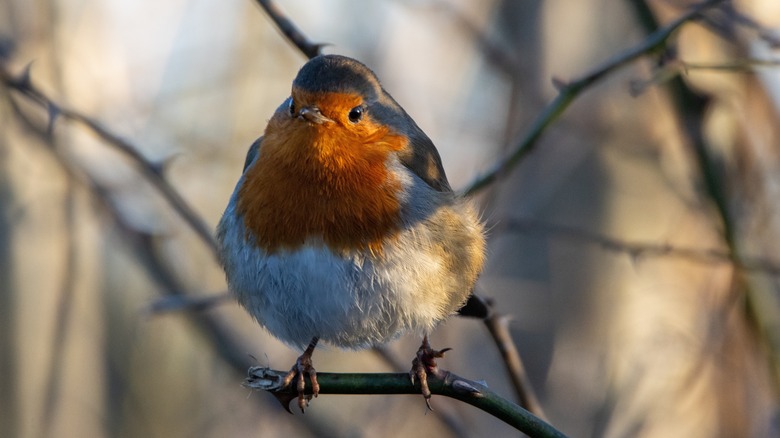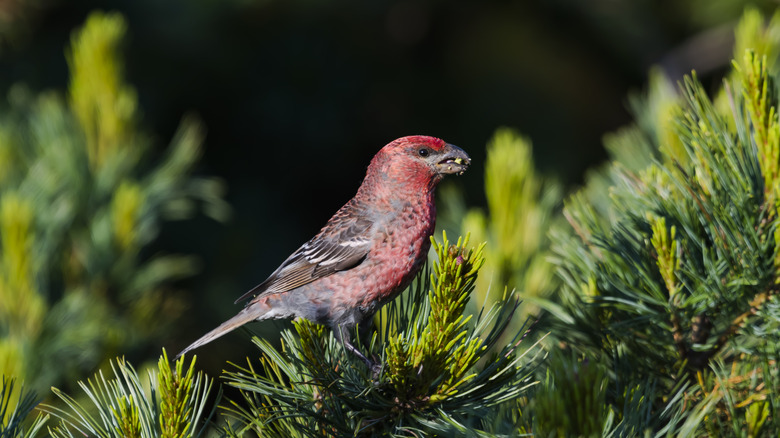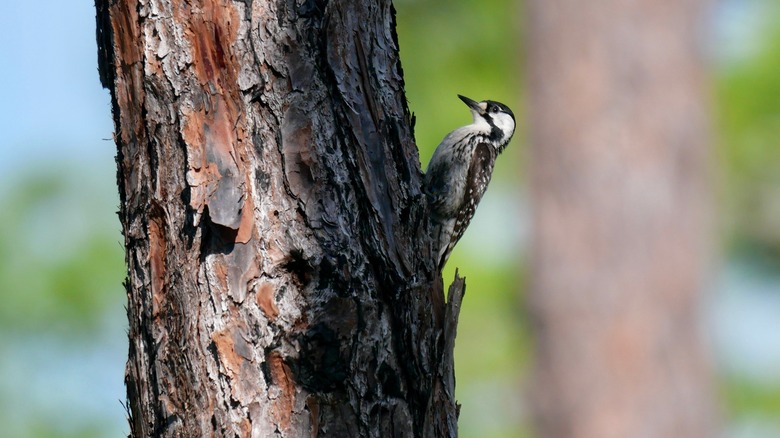The Fast-Growing Tree Species That'll Have Birds Visiting Your Yard Year-Round
If you want to create a wildlife sanctuary where you'll have birds visiting all year-round, you'll need to provide three important elements that birds need: food, shelter, and water. The first element can be provided by growing some beautiful plants with nectar-rich flowers in colors that will attract more birds to your garden. But, you can also provide the elements of both food and shelter by planting native tree species in your yard. Planting native species is important because these are what your local bird population is accustomed to. One such species is the pine tree. Compared to many other tree species, pine trees are considered fast-growing and can grow from 2 to 4 feet per year depending on the species.
There are numerous pine species that are native to the U.S. and these trees can provide a food source for insect-loving birds because they attract a range of moth and butterfly larvae. Pine trees also produce seeds that are popular with seed-eating birds and mature pine trees offer local birds shelter from predators and harsh winter weather. Plus, they also provide ideal nesting sites when spring comes around. Once you have one or more of these trees growing in your yard, you could even go one step further and install some nesting boxes for cavity nesting birds such as woodpeckers, bluebirds, and wrens. Here are a few different pine tree species that you could consider growing in your yard.
White Pine
The white pine (Pinus strobus) is native to the Central and Eastern United States as well as Central and Eastern Canada. It can be successfully grown in USDA hardiness zones 3 through 8. Bear in mind that you're going to need a fair bit of space to grow this majestic tree because it can reach a height of up to 80 feet and a spread of up to 40 feet. If you do have a large yard, this pine tree species will provide an abundance of important food and habitat for many local and visiting bird species. When grown in an open area, this pine tree species can grow up to 4 feet a year. It's also one of numerous fragrant trees that'll make your yard smell better than ever.
The white pine is a host plant for the Imperial moth larvae that will feed on the tree from April through October. Insect-feeding birds, such as pine grosbeaks will flock to your trees when these larvae are present. The white seeds that the tree produces are also loved by many different bird species, and this magnificent tree provides plenty of year-round shelter for the birds. If you don't have a large enough yard to grow this tree, there are also dwarf forms available such as Pinus strobus 'Nana' (height up to 7 feet, width up to 10 feet) or Pinus strobus 'Blue Jay' (height up to 8 feet, spread up to 5 feet).
Colorado Pinyon pine and long-leaf pine
The Colorado Pinyon pine (Pinus edulis) is a much smaller pine tree which makes it perfect for compact gardens. It's native to Southwestern U.S. and can be grown in USDA hardiness zones 6 through 8. This lovely tree also supports Imperial moth larvae which are beneficial to many insect-feeding birds. One interesting feature of this pine tree species is that it produces seeds that are edible, commonly known as pine nuts. These pine nuts are produced by the female cones and many bird species rely on these as an important food source. Although considered somewhat slower-growing, this species can reach a mature height of up to 20 feet in only ten years.
Another pine species to consider is the long-leaf pine (Pinus palustris) which is native to the Southern U.S. and can be grown in USDA hardiness zones 7 through 9. This is another tree that requires plenty of space as it can reach a massive height of up to 120 feet but it grows slowly for the first five to 10 years and then growth speeds up to around 2 feet per year. This magnificent tree is home to the endangered red-cockaded woodpecker which creates nesting cavities in the trunk. Other birds that flock to this beautiful pine include mourning doves and brown-headed nuthatches. Once you have these trees growing in your yard, you might also want to find a range of different plants that will thrive under a pine tree.


